- Home
- Paul Christopher
Wisdom of the Bones Page 12
Wisdom of the Bones Read online
Page 12
‘You do the same. No way you’re driving back to Dallas tonight,’ the Old Man ordered Ray. ‘Know where the key to Rose Cottage is?’
‘Over the door.’
‘Put it back when you’re done.’
‘Will do.’
* * *
Sitting behind the wheel of the Avanti, Ray found his way back onto Highway 79 and headed north into the city of Wichita Falls. The car was a wonder of design, the interior laid out like the cockpit of an aeroplane, the main switches on a console overhead. It seemed to be padded everywhere and Ray didn’t have any of the pains behind the knees he had in the Chevy or the sense that his blood was being cut off. Beside him his brother leaned against the side of the door, eyes half closed.
‘Know why I’m doing this for you, don’t you?’
‘Sure,’ said Ray. ‘You wanted to keep me away from Cyn.’
‘Becher ass,’ Audie muttered. ‘Strangest thing. Better I do, the more she doesn’t like me. Maybe she never got over her crush on you.’
‘It wasn’t a crush, Aud.’
‘Whatever you want to call it. But I tell you something, I saved you a lot of grief, brother. A whole lot of grief.’
‘Why is that?’
‘’Cause she’s a bitch, Ray, and we were both too stupid to see it. Difference is, Adolf Fucking Hitler got in the way for you and saved your bacon.’
‘You’re drunk, Aud. You want to have a hangover at lunch tomorrow?’
‘Cyn’s a true-blue bitch. She’d’ve fucked half the coordinating committee to get us chairs for that lunch. She’d’ve fucked the fucking governor himself.’
‘Shut up, Aud. You sound like a fool when you talk that way.’
‘Courthouse is Sixth and Lamar. Wake me up when we get there.’ He let his head fall back against the moulded headrest of the seat and was snoring almost instantly. Ray kept driving, both hands on the wheel, trying not to think about what his brother had said, trying to believe that it was just the liquor in him talking.
Not believing it.
Chapter Ten
When the Wichita County Courthouse was built in 1919 it looked like every other blockhouse-style judicial building being erected at the time. Last year the building had been completely renovated and now looked more like a modern art gallery or an aeroplane hangar than a courthouse.
Ray parked the Avanti in a spot right out front then shook his brother awake. Together they went up to the glassed-in lobby where Audie tapped on the door, showed his identity card and was let in by a suspicious guard in a uniform a couple of sizes too large for him. When the guard realised that the slightly drunk man smelling of Wild Turkey was actually his boss, he became falling-over helpful and guided both Ray and Audie down the fire stairs to the basement records room. It was divided into two areas – a small outer office that was filled with cards indexes like a Carnegie Library and then, behind a second door, the cavernous file room itself that filled a good half of the building’s basement.
The door guard left them and Audie sunk down at a swivel chair behind a grey metal desk. ‘How is this stuff organised?’ Ray asked.
‘Year, date, prosecution number. Homicides are on yellow cards with red tabs. That should give you a box aisle and row number.’
‘What year did the Old Man say these killings happened?’
‘Summer 1937, ’38, he said. Wasn’t too sure.’ Audie was barely awake, leaning dangerously far back in the chair. Ray got him turned around with his head down on the desk and then went back to the index cards. He riffled through 1937 looking for the telltale red tabs and came upon quite a number but none of them was what he was looking for. He went on to 1938 and found his first match halfway through the drawer. It was the first of the white killings, July 17, 1938, a Sunday. The card said the victim was Mary Lou Mitchell, aged ten. There was an investigation number and thankfully it was cross-indexed with numbers for the rest of the killings, nine in all.
Ray left his brother sleeping and went through the steel mesh door into the file room itself. With the numbers in hand it took him the better part of two hours to collect all the files together but he finally managed it. He found an empty file box on a table beside the door and dumped all the string-bound files into it. He carried the files into the outer room and roused his brother.
‘Time is it?’
‘Ten.’
‘Better get back to Daddy’s.’
‘Come on then.’
Audie raked his hands through his hair, yawned and got up from the desk. ‘Want me to carry that?’ he asked, nodding at the box.
Ray shook his head. ‘I can manage.’
They headed back to the lobby, this time using the elevator. ‘Should show you my office.’ Audie belched discreetly. ‘Nicest one in the place. Corner on the top floor. Big shots only.’ He grinned.
‘I don’t qualify.’
‘No, but you’re my bro, bro, and that qualifies you and, besides you’re dyin’ so you deserve to see what you missed.’
‘Didn’t miss anything,’ Ray answered. The elevator doors slid open and they stepped out into the lobby. The same security guard was waiting.
‘Like to sign that material out, sir?’ he asked.
Audie snorted. ‘My big brother here will do it.’
‘Afraid it has to be you, Mr Duval. I mean he’s your brother and all but you’re the county prosecutor.’
‘Who knows?’ Audie grinned, signing the ledger. Ray stepped up and added the file numbers. ‘Maybe the next time you see me I’ll be president of the United States so what do you think of that?’
‘Be great, Mr Duval. Could use a Texan in the White House.’ The man was clearly willing to say anything just to get the obviously drunk county prosecutor out of the building. People who witnessed their ultimate bosses three sheets to the wind might lose their jobs.
‘Sooner’n you think,’ said Audie.
‘Come on, bro, let’s get you home.’ Ray shifted the box under one arm, grabbed his brother by the elbow and led him out of the building, letting the security guard lock up behind them. He eased Audie down the long flight of steps to the street, then poured him into the passenger seat and dumped the file box in back. Half an hour later he brought Audie back to Triple Ridge and put him into Cuquita’s efficient hands.
‘There is a daybed in the den. I put him there.’
‘The Old Man asleep?’
Cuquita smiled. ‘As drunk as his son.’
‘Mrs Duval?’
‘I give her hot milk and honey. Don’t worry. I tell her where her husband is sleeping it off.’
‘Good. Good night, Cuquita.’
‘You too, Mr Ray. You sleep good, I hope. You going early or you come up to the house for pancakes?’
‘Leaving early, I’m afraid.’
‘Too bad. You always like my pancakes.’ She paused. ‘Maybe next time, Mr Ray.’
‘Sure,’ said Ray. ‘Next time.’ And they both knew there wouldn’t be one.
He took the file box to his car, drove back up the long driveway, then out onto the Old Lake Road again, travelling for less than two hundred yards before he reached an open gate and a short drive around an old hawthorn thicket to Rose Cottage.
The cottage was just a bedroom and a bathroom with two windows and a narrow porch but it was just what he wanted – a soft bed and some distance from the Old Man. Dessert was all he could have taken and he was glad enough to be quit of his brother as well. From the way it sounded, Audie’s marriage was coming apart at the seams and Ray’d had about as much of his brother’s bad-mouthing of Cynthia as he could stand. He wanted to scrub the whole evening out of his mind and with the box of files he had the means to do it.
He found the key and opened up the cottage. It had a musty smell to it so he put a wooden stop under the door to keep it open and freshen the place. He switched on the overhead light and looked around. Nothing had changed since he’d stayed here after coming back from Korea. An iron bed with a footlocker.
A writing table under the window with an old candlestick telephone on it with a cloth-covered cord and a rag rug on the painted wooden floor. Over the bed was a painting done by his father. It was amateurish but realistic enough for Ray to see what it was – a rowboat with a little outboard on the back being launched at the end of the sand road that led down from their little cabin at Lake Arrowhead, a few miles south of Henrietta. There was a roughly painted-in small boy in the bow, looking out over the lake while a man pushed off, poised to jump into the boat and start the engine. A single line of darker paint arced up from the young boy’s hand. A fishing rod. The little inscription at the bottom had the Old Man’s initials and the date, 1930. Ray was already in the cops then, Audie twelve years old. It was Audie in the boat and the Old Man pushing off. A day on Lake Arrowhead fishing.
Ray turned away from the painting, searching for a memory to match it, coming up with nothing very close. He went back out to the Chevy, brought in the files and dumped them on the bed.
He spent a few minutes putting the files in chronological order, beginning with that of a twelve-year-old girl named Lucille Edmonds. Lucille’s father, Titus, had worked in the ice plant in Haynesville and her mother had worked as a day maid for a family in Wichita Falls, commuting by bus on the weekends. According to the file she had been deceased for a year prior to the murder of her daughter. There was no cause of death listed. Originally the case had been investigated by a Wilbarger County sheriff’s deputy named Dulane but it had eventually been handed over to the Wichita Falls Police Department and a detective sergeant named Ed Finney.
On Sunday, April 24, the young girl had been found in the town dump in the town of Oklaunion a few miles on the other side of the line in Wilbarger County, hence, the sheriff’s deputy. Finney immediately latched on to the girl’s father as the likely suspect since he was alone with the child all week but there was no real motive and by the third of the killings he was obviously out of contention.
Since the dead girl was a Negro, only a visual autopsy was done, by a pathologist at the state hospital, but that was enough. Lucille had been sexually assaulted orally, anally and vaginally and a substance (presumably semen) had been rubbed into her eyes. Her sexual organs and rectum had been removed by a sharp instrument and placed in the belly cavity, which had been punctured just above the navel. A large area of skin had been removed from the belly above the navel and smaller pieces removed from the thighs, the buttocks and either side of the spine. The body had then been carved into twelve separate pieces and rejoined. The pathologist noted that the cutting up of the body appeared to have been done post-mortem.
According to the doctor the girl had been dead for less than twenty-four hours before she was found, which was odd, since she had disappeared from her home three days previously, probably on her way home from school. A brief note at the end of the investigative report by Finney presumed that ‘the coloured girl’ had been killed in Haynesville, dismembered in a second location (unknown) and placed in the icebox at that time.
Two witnesses had been interviewed, Titus Edmonds and the caretaker at the dump, James P. Dunnagen. Their names were only noted with the term N.O.I. scrawled beside them. It took Ray a few moments to figure out what the letters meant but he finally assumed they stood for Nothing Of Importance since there were no statements. There were also no photographs, either of the crime scene or the body. All in all it was one of the sloppiest, shoddiest and vaguest homicide reports he’d ever seen. On the other hand, it had been written in 1938, twenty-five years ago.
He shuffled through the files until he reached the first white killing, Mary Lou Mitchell, age ten, discovered on July 17,1938, Sunday again. Mary Lou had been taken three days previously while walking home from school in the small town of Kamay, on the southern edge of the county.
Like the girl she had been moved, this time deposited in the garbage dump in Mankins, another small town no more than half a dozen miles from her home. Although she was the first white child in the list of those murdered and assaulted, there had been three before her, beginning with Lucille Edmonds in April, Tilly Chambers in May and Lillian Berry in June, all found on Sundays, all disappearing three days earlier and all raped, assaulted, eviscerated and mangled like Mary Lou Mitchell.
In Mary Lou’s case the file was ten times thicker than those for the three girls and contained a wealth of crime scene and autopsy photographs. The pictures were grisly but they proved one thing to Ray: even though the antique dealer was an adult, and had not been sexually interfered with, Jennings Price had been butchered identical to the way the girls had been killed, right down to the single, razor-sharp cut to the neck resulting in decapitation and a small chisel cut into the brain through the orbit of the eye.
By this time the investigation into the multiple murders had been taken over by two Texas Ranger detectives working on the case full-time out of Wichita Falls – Detective Sergeant Robert Moran and Detective Sergeant Harry Durkin. Both men interviewed more than a dozen people but neither man came up with anything. Frustration increased when another corpse turned up at the dump in Electra, a mining town no more than three or four miles from Haynesville, the town where Lucille came from. Titus Edmonds was interviewed again, this time with a full statement, but once again the man was definitively cleared. At this point in the file Moran noted that Titus Edmonds had a burning cross set alight in his front garden a week after the discovery of the second white corpse, that of thirteen-year-old Helen Reeb. Three days later he was beaten with a six-foot length of braided wire nailed onto the end of a baseball bat and then lynched in front of his own house. No arrests were made, although there was a small pencilled note in the margin that said ‘contact James at the Kl.’ Kl obviously stood for Klavern, but James, whoever he had been, was lost in the mists of time. The rest of the young girls – Sally Wells, eleven, Anna May Johannsen, ten, Mona Cutleaf, twelve, and Maybelle Killeen, thirteen – had been kidnapped respectively in September, October, November and December, always three days before the Sunday they were discovered and always in a town dump several miles and sometimes more from the town where they lived.
Shortly after the Maybelle Killeen incident local deputies were guarding town dumps in more than twenty communities across four counties but the killings seemed to have run their course. By New Year’s Day there had been nine bodies buried and not a clue as to who had killed them so horribly. Detectives Moran and Durkin had gathered an enormous amount of information by that time, including dozens of supposed eyewitness accounts of the girls being kidnapped that all came to nothing, as well as scores of newspaper clippings and offers of supernatural aid, but all they could really do was wait for the murder that would come in January.
It never did. Nor was there a killing in February, March or April of 1939. By May the killings had dropped out of the public eye and by July, with no new killings, the people of Texas, and in particular those in Wichita Falls, turned their attention to the war that seemed to be brewing in Europe and to the twin World’s Fairs in San Francisco and New York. With all that, the murders of nine black and white-trash Texas children were all but forgotten.
By January of 1940 the files were officially listed as ‘pending’ and put into storage. Durkin and Moran had been sent back to regular duties months before that when it became clear that the strange killings had ended, much to everyone’s relief.
It was hot and stuffy in the cottage. Ray stacked up the files and put them on the table by the window. He cracked a window for some more air, then stripped down to his boxers and lay down on the metal-frame bed, both pillows propped up behind him. Usually now, it was the only way to sleep. If he put his head too low and his ear to the pillow he could hear the wet rattle of fluid in his lungs and the straining beat of his heart in the pulse under his jaw.
He closed his eyes and thought about the first of the children to die, Lucille Edmonds. According to the brief file her birthday had been in the first week of April so she was just twelve. When he was
that age the only things on his mind were baseball and fishing and what to do about the constant and insistent erection that never seemed to go away or, when it did, reappeared at the most inappropriate moments, like standing to answer a question in geography class.
To him the black kids in Henrietta went to the black school and that was just the way it was and had nothing to do with him.
The Klan was a strange secret society like the Masons but nobody paid much attention because everyone knew that Carl Bean, who ran the hardware store, was a member and so was Freddy Corbett and his twin brother, Artemis, who ran one of the cotton gins in town.
It all seemed innocent enough and ordinary enough but meanwhile little kids, some of them black little kids, were being raped and tortured and almost skinned alive before their heads were chopped off their bodies. And what that meant was that it hadn’t been safe at all. It never was and it never would be. His small happy world had been a lie, just like the lies that later sent him across the Atlantic Ocean to watch his friends die all around him and, God help us all, it had been that way for every generation that had come before and would come after.
He stared at the pile of old dusty files in their old pale folders bound with pink ribbon that had once upon a time been red. Lucille Edmonds would be in her late thirties now if someone hadn’t fouled and destroyed her. The life she would have had might not have been a very good one, perhaps no better than the one her mother or her father led, but she would have seen time pass, perhaps borne a child, and that was something, however small, that had been stolen from the world.
He thought about his own life and wondered idly if it had really amounted to very much, any more than Lucille Edmonds’s would if she’d had a life to live. Probably not. There’d be few to mourn his passing, few to miss him in their hearts if any. Long before he’d come down with his sickness he’d wondered about things like that, staring down at a murder victim, sometimes so freshly killed the body was still warm, so recently slipped from life by a bullet or a knife that the illusion of being alive remained. It was an illusion that never lasted long and then the day continued, minus this one soul, and nothing of it remained, and except on rare occasions there was no one or nothing to mark the person’s passing. It had been the same in his wars, like Lieutenant Belcher and the Gruen wristwatch he wore. He died, the watch lived on and no one really cared.

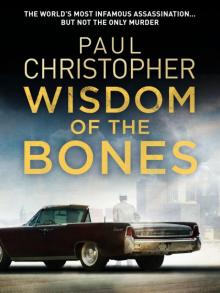 Wisdom of the Bones
Wisdom of the Bones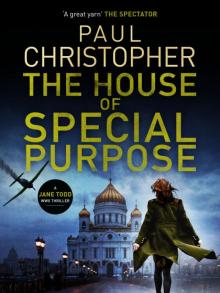 The House of Special Purpose
The House of Special Purpose The Second Assassin
The Second Assassin Michelangelo's Notebook
Michelangelo's Notebook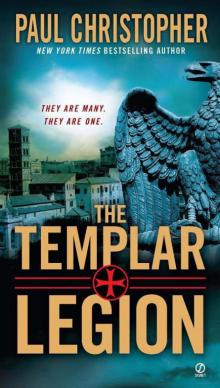 Templar Legion
Templar Legion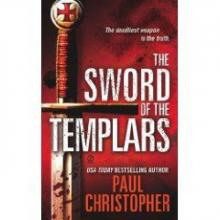 The Sword of the Templars t-1
The Sword of the Templars t-1 Red Templar
Red Templar The Aztec Heresy
The Aztec Heresy The Templar Legion
The Templar Legion Rembrandt's Ghost
Rembrandt's Ghost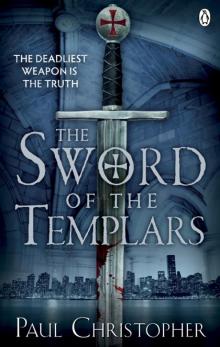 Sword of the Templars
Sword of the Templars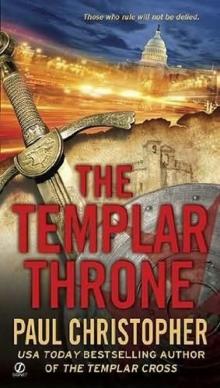 The Templar throne t-3
The Templar throne t-3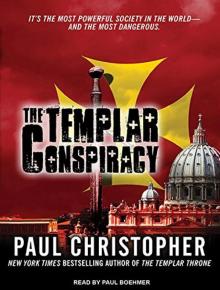 The Templar Conspiracy
The Templar Conspiracy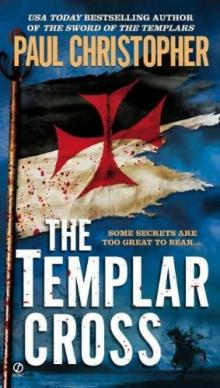 The Templar Cross t-2
The Templar Cross t-2 The Templar Legion t-5
The Templar Legion t-5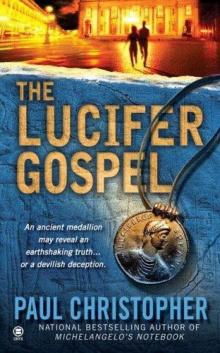 The Lucifer Gospel
The Lucifer Gospel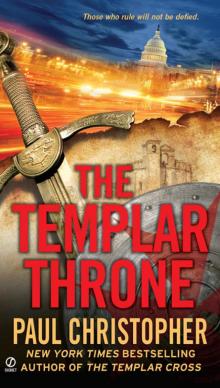 Templar Throne
Templar Throne Michelangelo_s Notebook fr-1
Michelangelo_s Notebook fr-1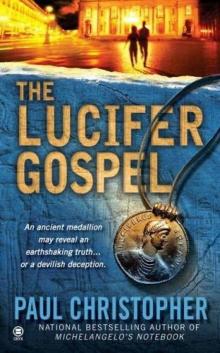 The Lucifer Gospel fr-2
The Lucifer Gospel fr-2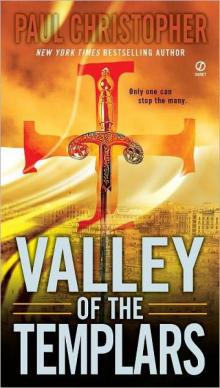 Valley of the Templars ts-7
Valley of the Templars ts-7 Valley of the Templars
Valley of the Templars Templar Cross
Templar Cross The Templar Throne
The Templar Throne The Templar Cross
The Templar Cross Lost City of the Templars
Lost City of the Templars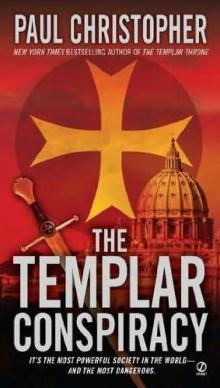 The Templar conspiracy t-4
The Templar conspiracy t-4 Templar Conspiracy
Templar Conspiracy